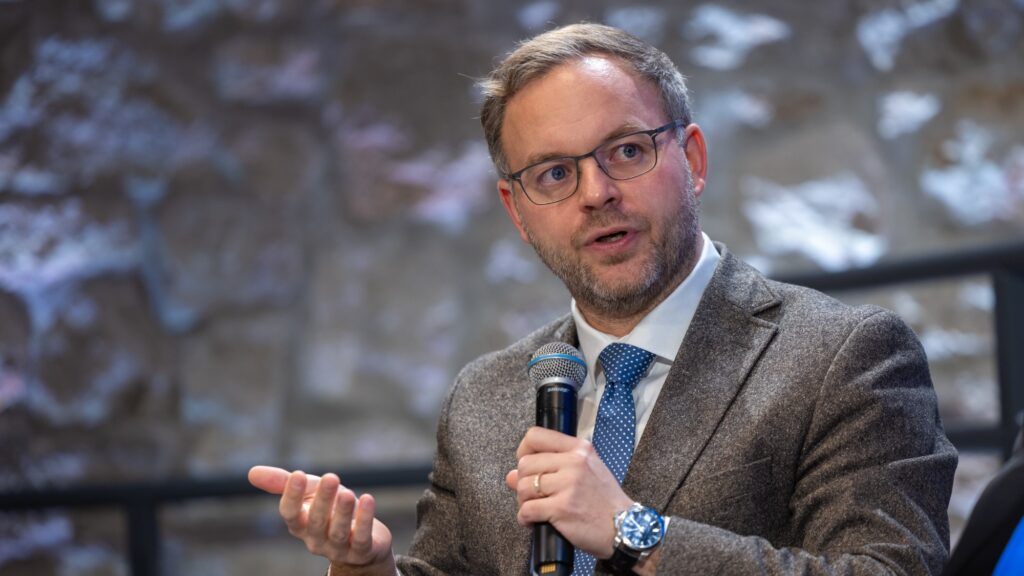The Lessons of Vaccination for European Integration
Seventy-one years ago, on 9 May 1950, there began that grand European journey which led to the European Union we still know today. The road has often been bumpy, full of mazes and forks where important decisions had to be made regarding the paths European integration would take. Regardless of one’s political views, there seems to be a general consensus that the world—and within it the EU—is currently entering a period of change. This is evident from the series of crises that the community has undergone over the past ten years, some of which are still ongoing today, or are just beginning to arise. Nothing better illustrates the fact that the EU is in a period of transition, a period of change, than the EU’s own website, which, in a chapter summarizing the history of the Community, refers to the 2010–2019 period as a ‘challenging decade’. The term is very apt, but we may doubt whether that era is really at an end. The debate over climate change and its management, the unresolved migration crisis, growing levels of inequality, and increasing political and mental polarization do not suggest that the time of challenges is over. This is not the first, and certainly not the last, period in the history of European integration in which such uncertainties had to be confronted. Perhaps the difference between past and present crisis periods is that, in resolving past crises, members of the European Union showed a willingness to adapt both their own and the community’s common thinking to better confront them. A like degree of intellectual courage and willingness to innovate could pull the EU out of its current precarious situation. To do so, however, it will not be enough to look backwards, treating former outcomes as incontrovertible, unalterable, almost sacred truths. Instead, new modes of working and thinking must be devised, based on the needs of the European Union as it confronts a future which is becoming, at least in outline, ever clearer.
Reading through some of the books and studies which examine the history, changes, and development of the EU, it is apparent that the Community often forgets previous dilemmas, ignores criticism, and portrays the decisions spanning seven decades and more as a straightforward, ineluctable process, during which both the goal and the route to its attainment were more or less self-evident all along, while the real debates about the future direction of the Community are dismissed as the reactionary grumblings of naysayers and faint-hearted pessimists, unworthy of even retrospective examination. This sort of analysis has given birth to the integrationist paradigm, according to which the process of European integration, and especially the transfer of sovereignty, is usually described as a kind of tunnel in which it is only possible to move forward, while to reverse the process would be impossible, or at least extremely dangerous. The way is already clear—all one has to do is move forward along it. However, the series of crises that have hit the EU over the past decade has made it increasingly clear that this paradigm is losing its strength, validity, and truth. In fact, though it remains the dominant narrative, its influence has been steadily declining for some time.
The power of the paradigm was fuelled in part by the successes of integration, and in part by the power of history written by the victors
However, the crises and challenges of the past decade have led to—and are still leading to—the emergence of more and more doubts about the perfection of integration, and about whether it is even the right direction. The response automatically offered by proponents of the integrationist paradigm is still based on references to past successes, and to interpretations based on the historical scenarios they prefer. Meanwhile, doubt and uncertainty continue to build, and the validity and legitimacy of the automatic answers so far offered are being questioned by a wider and wider proportion of the population. Reduced prosperity, growing inequalities, the sustainability of existing models, migration and security challenges, and climate change debates are all quickly eroding the current view that integration has practically no downsides, while its prescription as a cure-all is in even worse repute. The latest lesson has been the coronavirus pandemic and the European vaccine procurement programme, which has been both dismal and alarming.
Last June, the European Commission presented an EU vaccine strategy to accelerate the development, production, and deployment of coronavirus vaccines. The proposal was accepted by the leaders of the member states. The main objectives of the strategy were correct, fully in line with the seriousness of the pandemic and the expectations of both EU member states and their citizens. The main objectives of the strategy prepared by the Commission were presented as follows: ‘ensuring the quality, safety and efficacy of vaccines; securing timely access to vaccines for Member States and their population while leading the global solidarity effort; ensuring equitable and affordable access for all in the EU to an affordable vaccine as early as possible; making sure that preparations are made in EU countries regarding the roll-out of safe and effective vaccines, addressing transportation and deployment needs, and identifying priority groups which should gain access to vaccines first’.
While the strategic goals were correct, practical implementation failed at several points. Vaccine deployment, as many evaluations have shown, was too bureaucratic, too limited, and too slow. Regrettably, debates over the safety and efficacy of vaccines have prioritized political and geopolitical concerns over medical considerations. EU policymakers have sought to prevent member states from offering their citizens either Russian or Chinese vaccines. This situation remains unchanged at the time of writing, despite the fact that the WHO has approved the Sinopharm vaccine for use, while the prestigious medical journal The Lancet has declared the Russian Sputnik-V vaccine both safe and effective. This situation is perhaps best illustrated by the fact that even at the end of March, and in spite of the unquestionably slow pace of European vaccination rollout compared to the UK, the US, or even Israel, EU Commissioner Thierry Breton said that the EU had no need of the Russian vaccine.
The second goal listed by the Commission is perhaps the one in which the EU’s performance has been most unsatisfactory.
It declares that member states and their populations should have timely access to vaccines. In terms of the percentage of the population vaccinated, the EU is currently lagging far behind not only several of its traditional competitors, but also many other countries. Vaccination is currently at a much higher level than in the EU in, for example, Israel, the UK, and the US, but also in the United Arab Emirates, Chile, and Canada. Of the aspects listed, perhaps the most significant results have so far been achieved in terms of affordability, but this is a Pyrrhic victory, given that vaccine procurement in the EU has been so slow, perhaps due in part to the pursuit of lower purchase prices. Israel, the world leader in terms of vaccine deployment, has pursued a very different ‘it costs what it costs’ strategy for vaccine procurement, and it is to this, among other factors, that the success of its vaccination programme can be attributed.
The fourth point, support for national vaccination programmes, is the area in which we have least insight, but it is certain that EU countries have approached population vaccination in different ways—which is by no means a bad thing, since the health of a population, its median age, and of course much else besides, can vary from country to country and even region to region.
The vaccination situation in the EU shows extremely large disparities per head of population
This, together with what has been described above, suggests that the Commission’s objectives have not been achieved, and in many cases have been missed by wide margins. That is why it is worth paying attention to the countries that are most successful in terms of vaccinations within the EU. If we look for the answer in the data listing the number of vaccinated people per 100 inhabitants (which offers a good comparison), two EU member states stand out as particularly successful, in that the rate of vaccination exceeds 50 per cent of the population: Malta and Hungary. The success of both countries lies in the fact that they did not wait for a common European solution, but acted independently in view of the pandemic situation and its risks.
Malta decided very early to maximize the amount of vaccine ordered, even before negotiations between manufacturers and the European Commission had begun. Other positive effects on vaccine procurement in Malta have also been due to anomalies in vaccine distribution in Europe: Malta did not merely order a supply of vaccines proportionate to its population, but considerably more, and this foresight has been supplemented by a rapid vaccination programme; that is, the vaccines which arrived have been administered to the population as quickly as possible. While Hungary embraced the spirit of the goals set by the Commission, it has embarked on a different path to the one the Commission proposed: sensing that the European vaccine procurement programme would be too bureaucratic and slow, it began obtaining vaccines from other sources. After all, during a pandemic, time is much more than money; it is life itself, and procrastination costs lives.
Dissatisfaction with the Commission’s performance has grown and is still growing; even member states that have been pillars ofEU integration, such as Austria, Germany, and Sweden, have expressed their dissatisfaction, and have embarked on their own attempts at joint procurement and negotiations with other manufacturers. At the same time, this means that, indirectly, more and more countries are questioning the Commission’s competence, the effectiveness and necessity of joint action, and are noting the weakness of the integration paradigm presented in the introduction. After all, the successes of the past are no longer enough, and the one- way-tunnel analogy is becoming steadily less persuasive, given that more and more states are turning around, and are finding that, far from being dangerous or impossible, it is proving positively beneficial.
This possibility of reversal does not entail a complete rejection of integration and its previous successes, or completely and permanently abandoning it. Rather, it shows a degree of maturity about integration, in that participants in the process are able to think outside the box, putting aside that attitude of almost conscious cognitive dissonance which has all too often characterised any discussion about the limitations, negatives, and shortcomings of integration. Nor would such a sceptical approach be to the detriment of integration, but would positively benefit it. Whether we like it or not, the EU is at a turning point. And this period, like any period of transition, is difficult, full of crises, and entails questioning the validity of the achievements of former eras, leading to an increase in tension and uncertainty. As such, this new decade in no way signals an end to the period of challenges. On the contrary, more and more crises and challenges are being added to the unresolved problems of the previous decade. However, this period of change should not be viewed simply as a series of crises, but also as an opportunity. This inevitably necessitates a new approach and, above all, a recognition that this change of era will take place independently of the will of the actors involved, driven by forces over which even the combined efforts of the EU cannot, or can only to a very limited degree, control. What we are talking about, after all, is a global process. Change on such a scale cannot be held back, and any attempt to do so merely consumes energy that should be employed understanding and adapting to this new era and situation. Nor can we remain stuck in the past, since to ignore such significant changes would have a significant negative effect on us and our community. Europe’s competitive advantage is political innovation: a decades-long project in political integration that has no equal on a global level. Perhaps the time has come to match the political courage shown seven decades ago, adapting the EU and its workings to the challenges of the present and still more of the future—even if that means overturning cherished paradigms that were once ‘best practice’ but today no longer apply—so that Europe can emerge from this inevitable period of change a winner instead of a loser. We can use the future to change the present, but to do so we need one, and perhaps several, realistic visions of what that future will look like.








